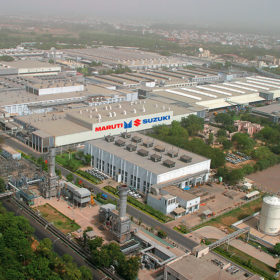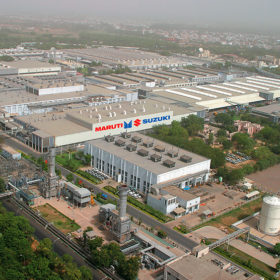Maruti Suzuki commissions 5 MW solar power plant in Gurugram

With this, the carmaker’s total solar power capacity has increased to 6.3 MW. The plant—developed in ‘carport’ style—will cover an area of 32,985 square metres and work as a roof for the cars parked underneath in addition to meeting internal energy requirements of the Gurugram facility.
India’s leading carmaker Maruti Suzuki has announced commissioning of a 5 MW ‘captive’ solar power plant at its Gurugram facility in the state of Haryana.
The plant—set up with an investment of more than Rs 200 million—is developed in carport style covering an area of 32,985 square metres. While the solar panels generate clean energy, these will work as a roof for the cars parked underneath. The power generated from the solar power plant will be used to meet the internal energy needs of the Gurugram facility.
The solar power project will produce 7,010 MWH of power annually and offset 5,390 tonnes of CO2 emissions annually, for the next 25 years.
This is the second grid based solar power plant for Maruti Suzuki, which had set up its first solar power plant of 1 MW at the Manesar facility in 2014. The Manesar solar power plant was further expanded to 1.3 MW in year 2018. With the latest project, Maruti Suzuki’s total solar power capacity has increased to 6.3 MW.
Talking about company’s green initiatives, Kenichi Ayukawa, Managing Director and CEO, Maruti Suzuki India Limited, said in a company statement, “We are committed for enhancing sustainable manufacturing and to achieve self-sufficiency in many of our functions. The new solar power plant will complement our efforts to adopt environment-friendly technologies and lower the carbon footprint. We are consistently exploring new ways to harness the abundantly available clean resources and implement them in our business operations.”


